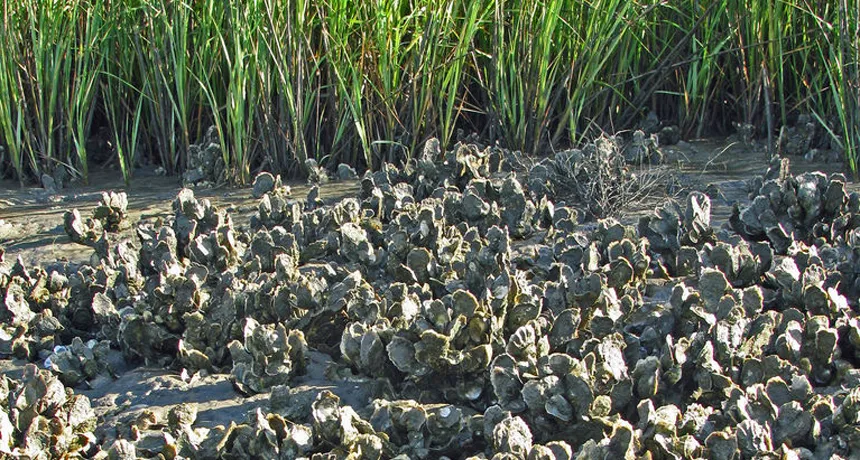The reefs are alive with the sound of oysters
Oysters use the sound of a reef to figure out where to settle down in life

Eastern oysters use sound to help them find the right place to settle down, a new study suggests.
© Kirk Mantay
- More than 2 years ago
Oysters seem like very prosaic creatures. Binding themselves firmly to the rock or the ground or other oysters, the mollusks spend all of their adult lives in the same place, the very essence of a settled existence. But before that, when oysters are young and all of life is before them, they lead a wild, floating existence, traveling the world (or at least a decent distance) before they settle down for life.
Baby oysters are planktonic, meaning they can’t swim, but instead float in the water column, only able to control whether they go up or down. When they find a place to settle, they shift down in the water column until they hit bottom and use their “foot” to settle on to a hard substrate (where they are now termed a “spat.” I love the word “spat.” Spat spat spat…). The best substrate is usually another oyster in a formed oyster bed, proof that it’s all about location, location, location.
How do they know where to do their settling? This becomes a very important question when you’re trying to rehab old oyster beds or get new ones started. Oyster beds are incredibly important to the ecosystems around them. Oysters are filter feeders that “clean” the water around them at a rate of up to 50 gallons per day. In recent years, eastern oysters (Crassostrea virginica) in particular have been badly overfished (overoystered?), resulting in more detritus in the water, and a definite need for more oyster beds.
What we need to do now is lure oysters to good prospective beds, or to old beds, to get the beds restarted. But oysters can’t exactly see where they are going, so you can’t just put up a neon sign. Instead, you have to understand the kind of cues that oysters use. There are several ways in which young oysters determine how they want to settle. The chemical in the water, the amount of salt, water depth and the currents can all play roles in when oysters decide to settle down.
It turns out the sound of a reef may play a role as well. After all, a lot of these other cues are only really evident when you are right on the site. Vibrations from reefs, on the other hand, could be detected far away, and give the oyster more time to get down and figure out where the party is. And reefs are very noisy places. They are so noisy that they can actually be heard by scuba divers. That noise means vibrations, and while oysters don’t have ears, they do have the ability to sense the motion in the ocean.
Can they locate a reef by its sound? To figure this out, Ashlee Lillis, a graduate student at North Carolina State University, got recordings of the soundscape at two oyster reefs, and at nearby soft-bottomed areas (unideal for oysters). They brought the soundscape samples into the lab and exposed a bunch of oyster larvae to underwater speaker-generated sound from oyster reefs versus no sound at all. The researchers report October 30 in PLOS ONE that more larvae settled to the bottom when there were reef sounds to be heard. More larvae also settled in the presence of oyster reef sound as compared to soft-bottomed sound.
But that’s in the lab, of course. In the field? Sound still matters! When Lillis placed test larvae within, erm … earshot? of a reef, versus away from reef sound, the larvae within the sound of the reef settled more than those further away.
So sound makes oysters settle. Unfortunately, we’re still not sure how they “hear” it. It could be receptors that sense vibrations, but future studies will tell. Knowing that oysters can sense the sound of a reef could provide further clues to why oysters like the areas they do, and how to lure them to make oysters bed where few oysters were before, possibly keeping the reefs alive … with the sound of oysters.





